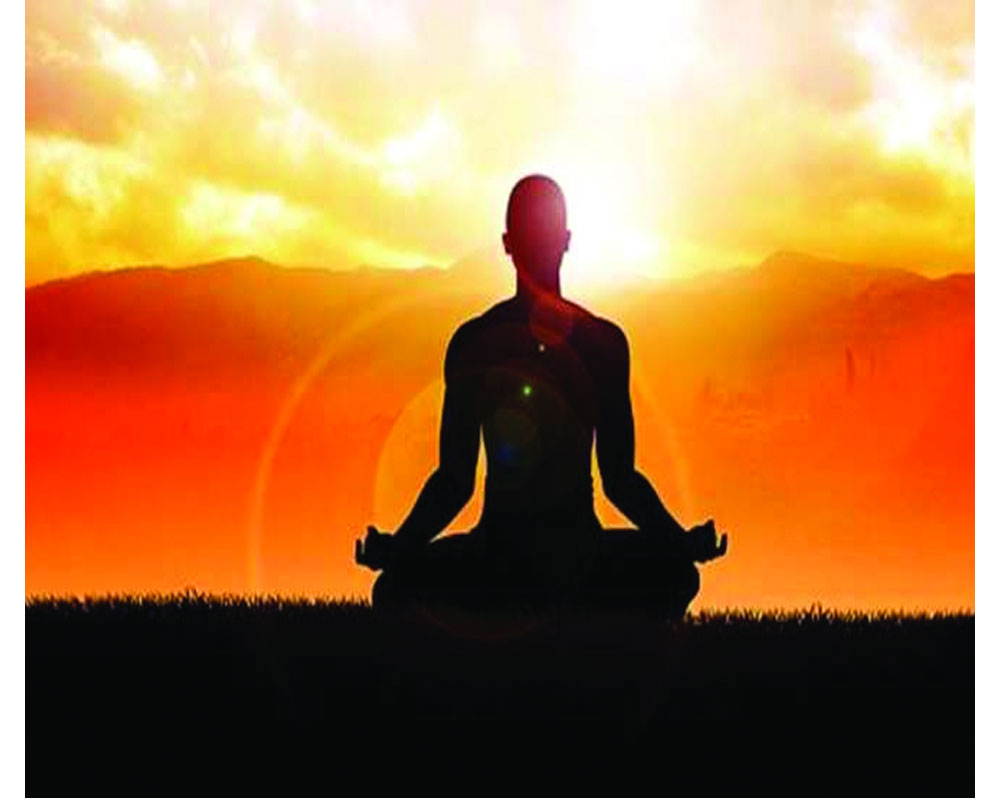We now move to Yoga-Asana, the third step of Patanjali’s eight-fold Yoga sutra. It is designed to acquire physical fitness and agility of body. It not simply facilitates acquiring a posture suited to effortlessly follow the process for a continued stretch of time. Also, the mind and fundamental element of consciousness will play out better, as the gross body platform serves as their vehicle of operation. No wonder, the gross body is said to be the temple of God. For, the divine force – fundamental element of consciousness - dwelling within keeps us alive, which when withdrawn, the gross body becomes dysfunctional and then disintegrates.
Yoga-asana is a set of physical exercises set in tune with the breathing cycle. Pursuing the process, through regulated body movements and increased supply of oxygen, the joints become supple, muscles become soft, and so bodily agility gets toned up. The process, however, needs to be pursued under the care of a trained expert. Keeping one’s health vulnerabilities in mind, only he would know what exercises will prove beneficial. Unguided, it may prove counterproductive.
Next in line comes Pranayama. The purpose is to ensure correct breathing as that is key to healthy living as well as longevity. For, inbreath does not simply bring in fresh oxygen supply. At subtle level it carries life forces (Prana as termed in Indian context). So long as we are breathing, we are in receipt of life forces that keep us alive, which when stops, the gross body becomes a dead matter. Also, life forces animate all our dynamic functionalities. The way respiratory system works, defines the quality of our physical and mental health, and therefore, needs to be in shape.
Pursuing Pranayama, it becomes possible to slow down the breathing cycle, which, in turn, retards the ageing process. For, the run of vital organs correspondingly reduces, as they are tuned to the breath cycle. This way the running time of the vital organs comes down, and thereby their servicing abilities increase in terms of time frame. The beauty of the process is that it helps augment oxygenation of the brain, which vitalises its dynamism further.
It will be interesting to note here that a tortoise is believed to breathe 3 to 4 times a minute and survives up to 300 years. An elephant supposedly breathes 10 to 12 times a minute, and lives for around 100 years. But a dog which keeps breathing briskly has a life of around 12 years only. So, as we slow down our breathing cycle, our aging process gets retarded. Evidently then, lifespan would expand.
Breathing cycle relates to our state of mind as well. A human being ordinarily breathes 18 counts per minute. But when in an agitated state, the breath count goes up to somewhere between 30 to 36. So, by reducing our breath count, we could keep in check mental agitation also.
Pranayam, though not difficult, but it is again a delicate process. Therefore, it needs to be pursued under guidance of a trained expert. Purposely therefore, the process as such is not being discussed. But in a passing reference, it needs to be mentioned here that the process involves holding the breath for a while (Kumbhaka as termed in Indian terminology) in between every inhalation and exhalation. One is supposed to dwell on space in between the two, as this is at rest. Not simply that, one’s attention is straightaway on the element of consciousness available there. So, dwelling on this space, even for a small stretch of time though, but it virtually puts us in a state of dhyana. As one graduates in the process, one has direct realisation of the life forces driving us. In this sense, pranayama can be said to be the beginning of dhyana process. The above two processes do also help ensure body-mind coordination. For, the body, mind, and nerves get duly toned up, vital to proper functioning of our internal communication mechanism. The ground is now laid down for pursuing the dhyana process proper.
The four steps of the Dhyana process to follow, need to be seen as progressively succeeding stages of a singular process. For, the first step Pratyahara, implies distancing from the outer world and turn the mind inwards. It is in this very mode that the whole process is carried on. Dharana, dhyana, and samadhi are again progressively growing three successive stages of the process. There is no exclusive process dedicated to either of them. One progressively and spontaneously keeps graduating from one stage to the other.
The writer is an astrologer, vastu consultant and spiritual counsellor. Connect with him at
Tel: 91-11-9818037273/9871037272


























